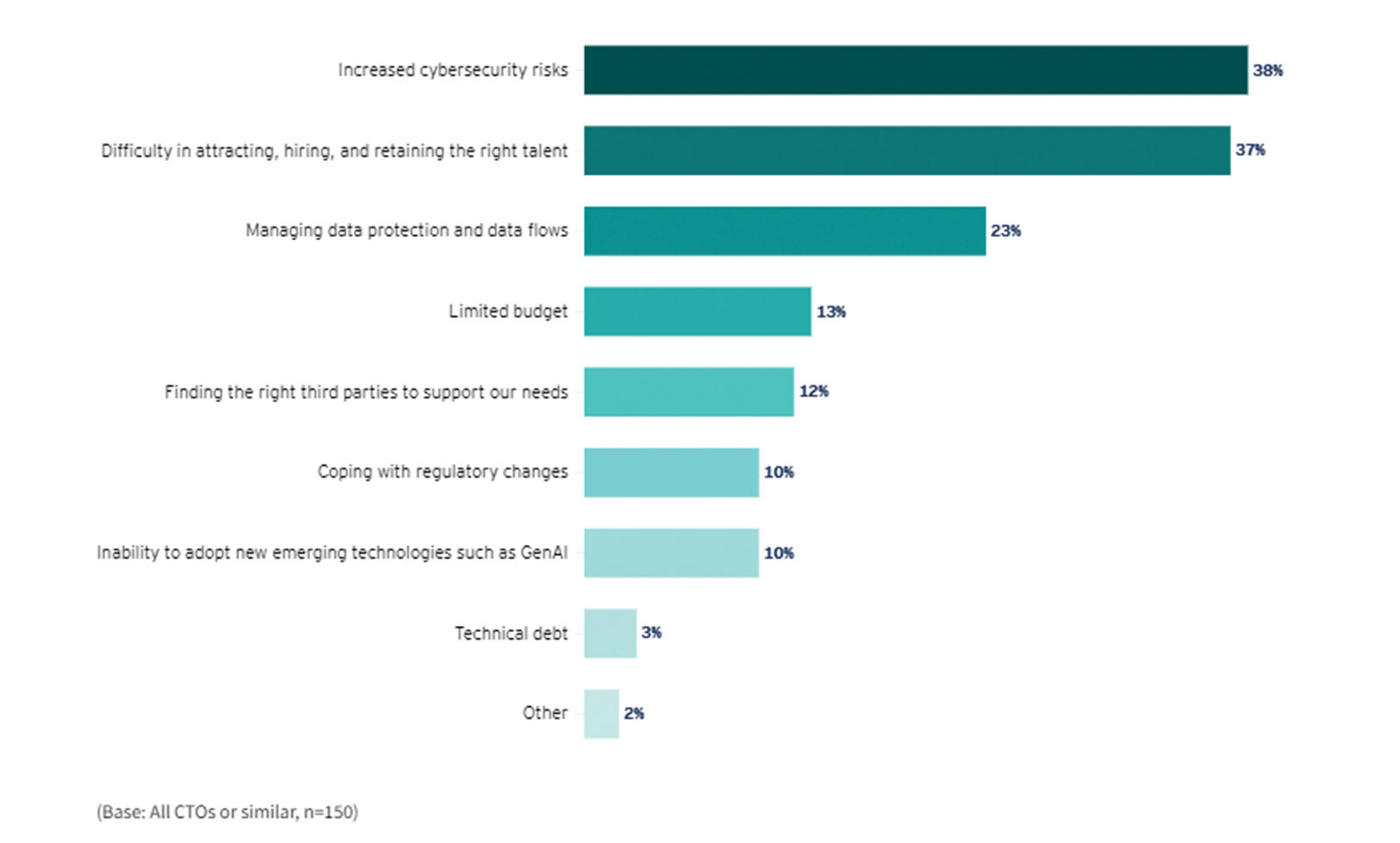Securing the next wave of digital transformation in the public sector

It is crucial that public sector organisations are seeking to leverage technological transformation to enable ongoing transformation of service delivery, writes Gary Comiskey, EY Ireland Government and Health Partner.
Across both public and private sector, today’s modern technology leaders are focused on ensuring that the technology upon which their core business functions operate seamlessly, that their systems are protected from ever more complex cyber threats, and that the correct digital infrastructure is in place so that their organisation can quickly seize new growth and service delivery opportunities. Each year EY Ireland engages with 150 senior tech leaders across the public and private sector, to understand what is front of mind for them right now and what the challenges and opportunities are as they look to the future. This year’s Tech Leaders Outlook Survey uncovered three key trends – cybersecurity, cloud adoption and the potential of artificial intelligence and generative AI (GenAI):
1. Cybersecurity is front and centre
Across all sectors, cybersecurity risks have emerged as the top issue for tech leaders in 2024, with almost four-in-10 (38 per cent) rating this as their most significant challenge.
Turning to the specific elements of cybersecurity, elevated cyber risks and management of data protection and flows were identified by 61 per cent of respondents as a critical challenge. A quarter of respondents pointed to their organisation’s vulnerability to cyberattacks as an area of concern.
Cybersecurity attacks can have a significant and detrimental impact on business operations and public services, as for example, when the HSE suffered the most significant cyberattack on an Irish state agency in May 2021. Lessons continue to be learned from this and in this context the significantly increasing investment in the National Cyber Security Centre is very welcome. The survey also highlighted that technology leaders are renewing their focus on cybersecurity with hackers and other bad actors now adding generative AI (GenAI) and other advanced tools to their malign arsenal.
2. Confidence in cloud adoption soars
While traditionally the public sector has been cautious in the use of cloud technology, this hesitation is subsiding and, confidence in cloud technology has surged across all sectors, with more than 80 per cent of organisations (public and private) covered in the survey either on the cloud or in the process of migrating to it. These results indicate increased trust and confidence in cloud technology. This rise in cloud adoption underscores the recognition of its benefits, such as scalability, flexibility and cost-effectiveness.
3. Discovering the hidden potential of AI and GenAI.
The public sector is continuing to explore opportunities to improve efficiency and deliver greater value for money and ultimately better service delivery for citizens. The adoption of AI is increasingly viewed by organisations as a key enabler to drive innovation. AI has the potential to change how government works, increasing operational efficiency, automating routine tasks and enhancing citizen service.
Our research finds that organisations are very interested in AI. However, this strong interest is not yet turning to action for the majority of organisations, with more than six in 10 (62 per cent) saying they are not yet investing in AI technologies and do not have an AI-related strategy in place. To further encourage AI within organisations it is imperative that robust AI policies are developed. Integrating governance with innovative AI applications can also help organisations unlock new opportunities.
Technological transformations
To capitalise on these opportunities, public sector organisations are undertaking a range of technological transformations. Some of the key transformation initiatives where EY has supported government include:
- Modernising and integrating disparate IT systems to foster collaborative and interconnected ways of working – Many government departments and state bodies face challenges with siloed and legacy systems. There is a growing need to adopt a ‘Whole-of-Government’ approach to offer joined-up and seamless services. EY are supporting the public sector to develop digital strategies and common standards to integrate siloed data and create common governance frameworks. Once a strategy is developed the next step is to enable interoperability of different systems through a flexible architecture and standards to enable data exchange.
- Embracing data-centricity to better understand and serve changing needs of citizens – Across governments, data-driven insights are increasingly a central part of decision making. All departments – from HR to operations, service delivery to the finance function – are data-hungry and want to be served data that monitors performance and how they can improve. EY is supporting departments and agencies to integrate data into operations to drive better citizen outcomes, offer more tailored services and adopt a human-centric approach for service delivery.
- Investing in digital skills and transforming organisational culture to create a future-fit workforce – Investment is required to adopt dynamic workforce planning through a long-term view of capacity and capability needs which EY has been supporting right across government. There is also a need to scale digital capabilities through partnerships with external experts, to rethink conventional recruitment, onboarding and training methods to foster digital leadership and culture.
The most significant challenges facing Irish tech leaders today

There has been a dramatic acceleration in digital service delivery and citizen interactions across many areas of government, in particular since the pandemic. Most citizens see greater use of digital technologies as a key way for government to improve:
- Convenience – more easily accessible services, organised around key life events;
- Personalisation – services that are tailored to meet citizens’ individual needs;
- Equality of access – support for the digitally-excluded and more equal provision of services;
- Transparency – showing citizens how Government is performing and tax money is spent; and
- Responsiveness – a means of providing feedback on public services, policymaking and service delivery.
Successful government departments and agencies will be those that focus on embedding new practices and finding new ways to serve the needs of 21st-century citizens. Technology and transformation can play a crucial part in this and the time to embrace this is now.
Gary Comiskey, EY Ireland Government and Health PartnerGary Comiskey is a partner in EY Ireland, working with the advisory team to deliver services to government and health sector clients. He leads a wide range of complex projects enabling public sector and health care transformation initiatives across central government and other public sector bodies. |
For more key insights about EY Ireland Tech Leaders Outlook Survey 2024, visit:


W: ey.com/ie/TechSurvey





